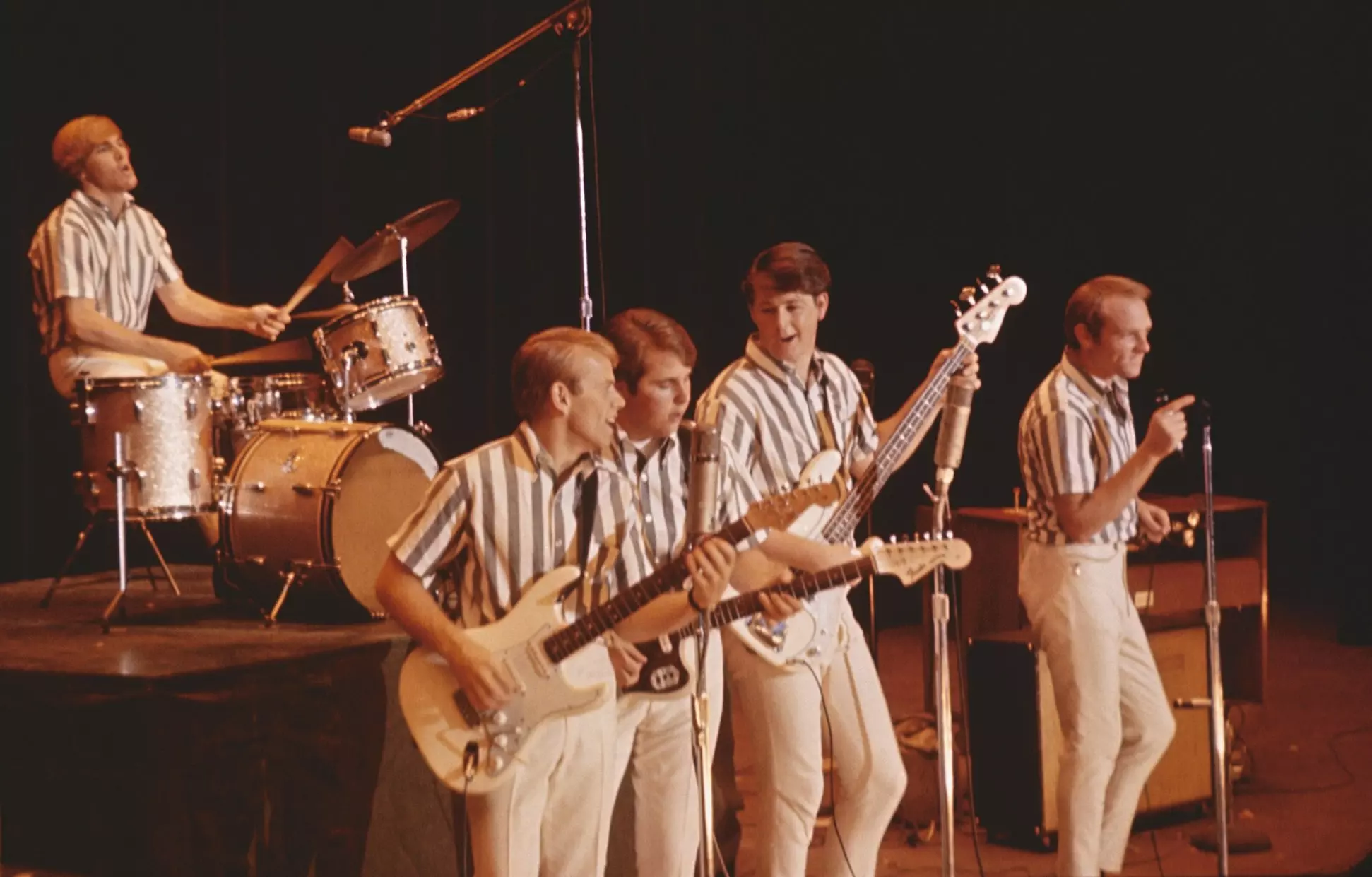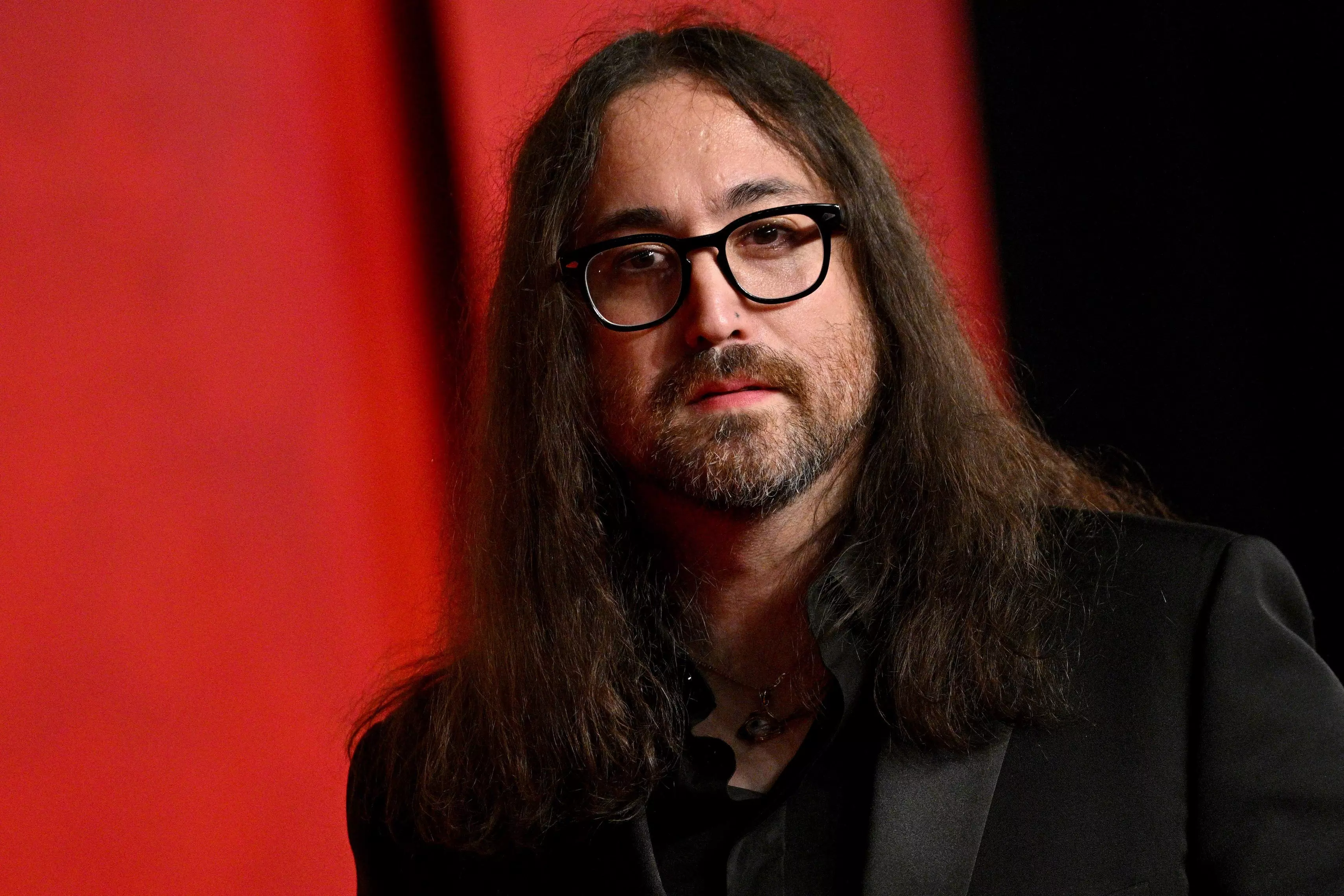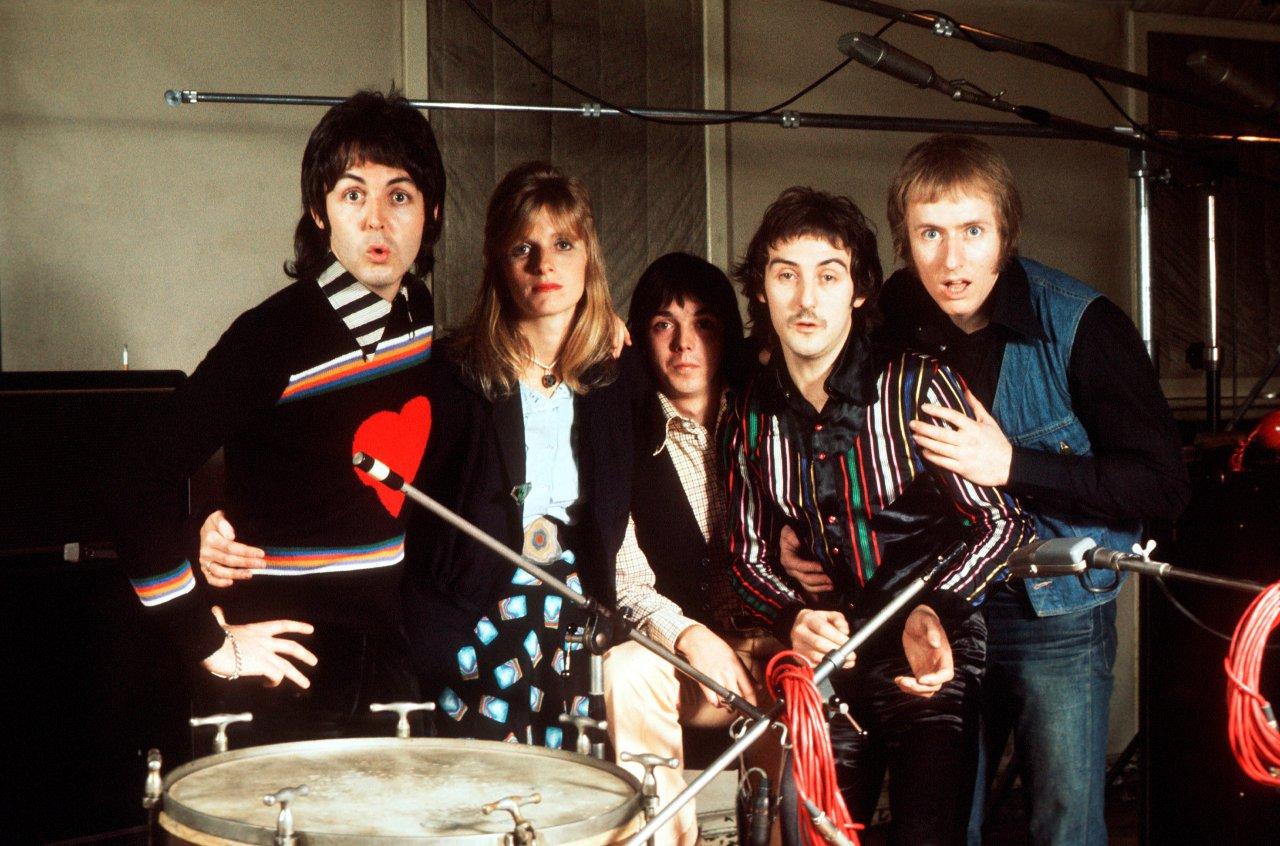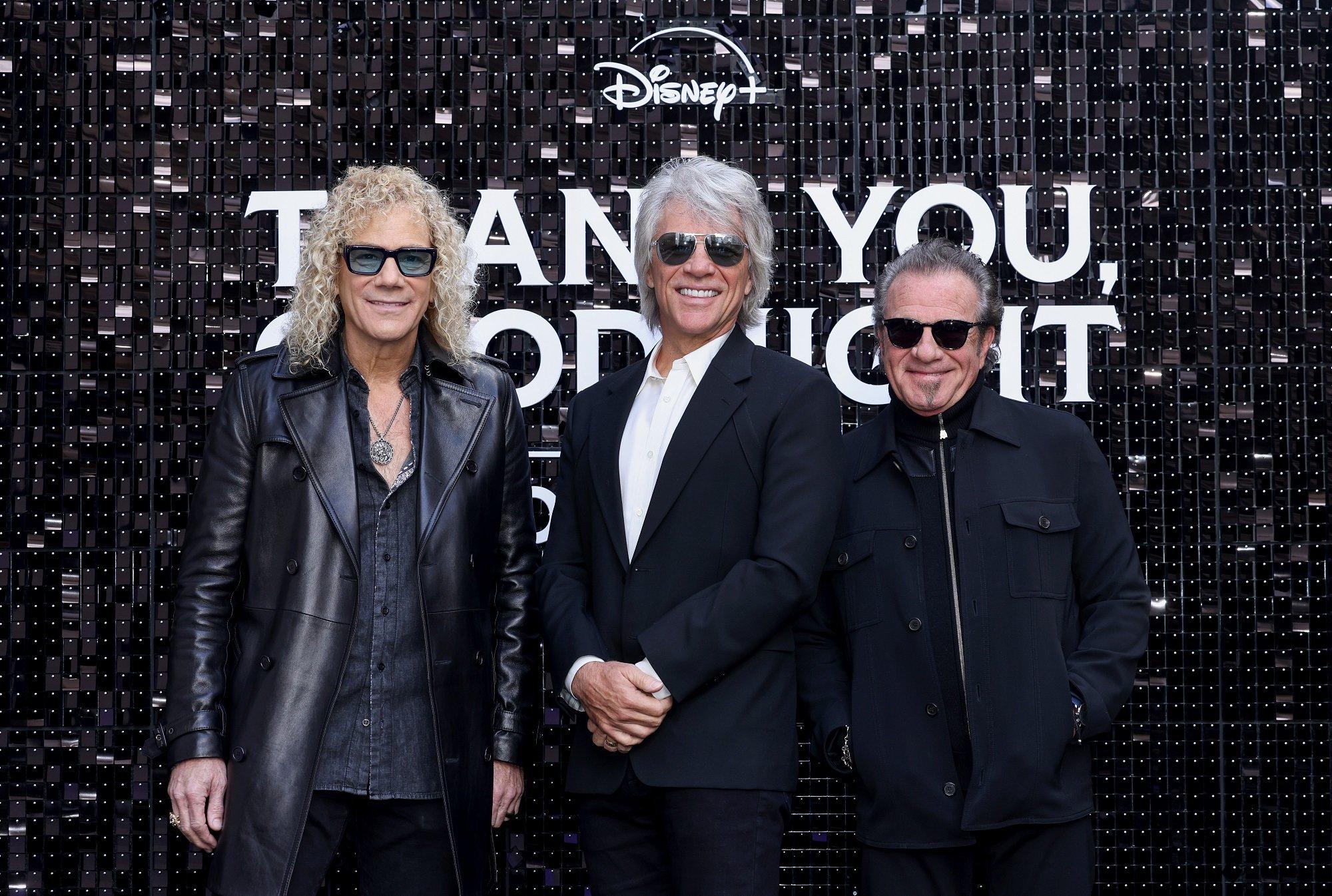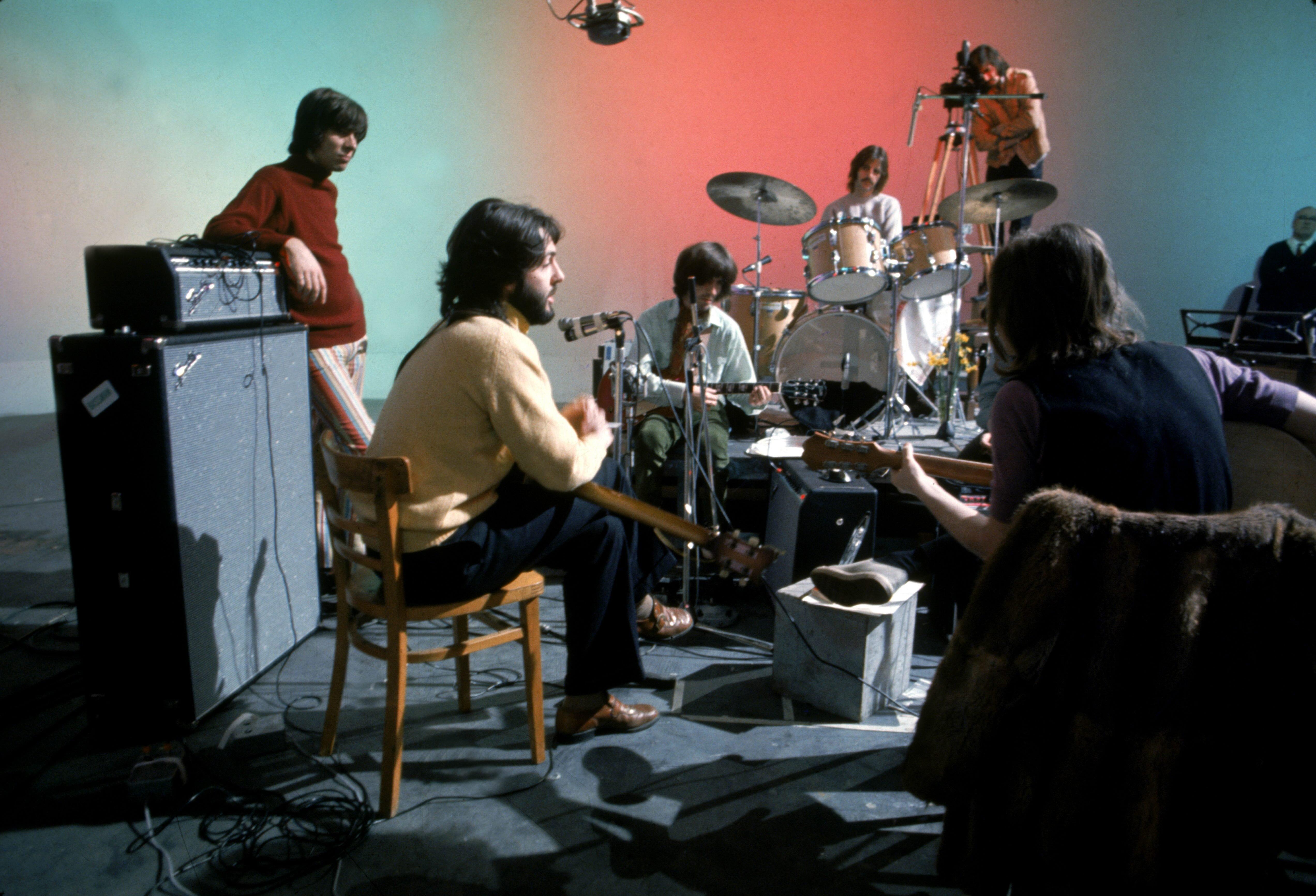(Paul McCartney will be honored as the 2012 MusiCares Person of the Year on Feb. 10 at a special tribute performance and dinner in Los Angeles, recognizing his accomplishments as an artist and humanitarian. MusiCares' mission is to ensure that music people have a compassionate place to turn in times of need while focusing the resources and attention of the music industry on human service issues that directly impact the health and welfare of the music community.)
To state the obvious, Sir Paul McCartney is many things.
He's a Beatle. An artist. A musician. A singer. A songwriter. A producer. A collaborator. A husband. A father. A philanthropist. An icon. A knight. A vegetarian. And a doctor, given his honorary doctorates from Yale University and University of Sussex.
Appropriately, McCartney's mantle has been crowded by countless awards over the years, with highlights including 14 GRAMMY Awards and a Recording Academy Trustees Award (1972), Lifetime Achievement Award (1990) and President's Award (2004). His name is also inscribed on 15 recordings that have been inducted into the prestigious GRAMMY Hall Of Fame.
On Feb. 10 McCartney will add another Recording Academy-related accolade to his incomparable résumé when he is feted as the 2012 MusiCares Person of the Year, an honor celebrating his musical accomplishments and philanthropic endeavors.
As for those musical accomplishments, they form the touchstones of a career laced with gold. From his historic output as a member of the Beatles to his songs with Paul McCartney And Wings and as a solo artist, McCartney is an institution. He's also an inspiration, a dedicated craftsman who is always pressing forward as evidenced by 2011's Ocean's Kingdom, McCartney's first orchestral score for dance, and Kisses On The Bottom, his latest studio album featuring two fresh McCartney-penned songs alongside spirited interpretations of classic American standards.
Following is a chronology detailing McCartney's impressive Recording Academy legacy to date, providing historical context around his GRAMMY wins, Special Merit Awards, the recordings earning GRAMMY Hall Of Fame induction, and his current 54th GRAMMY nomination. Of course, the output listed below represents an abbreviated overview of a career that has "touched billions of lives" according to President Barack Obama.
1964:
Best New Artist: 7th Annual GRAMMY Awards
When the Beatles picked up this honor on April 13, 1965, McCartney, George Harrison, John Lennon, and Ringo Starr had lit the fuse of Beatlemania. The Fab Four had already collected four No. 1 albums in the UK, Please Please Me (1963), With The Beatles (1963), A Hard Day's Night (1964), and Beatles For Sale (1964). A year earlier, in February 1964, the Beatles made their historic U.S. television debut on "The Ed Sullivan Show," performing songs such as "I Want To Hold Your Hand," "All My Loving" and "I Saw Her Standing There." By April 1964, the Beatles held the top five positions on the Billboard singles chart.<o:p>
A Hard Day's Night
Best Performance By A Vocal Group: 7th Annual GRAMMY Awards
When the Beatles picked up this honor on April 13, 1965, McCartney, George Harrison, John Lennon, and Ringo Starr had lit the fuse of Beatlemania. The Fab Four had already collected four No. 1 albums in the UK, Please Please Me (1963), With The Beatles (1963), A Hard Day's Night (1964), and Beatles For Sale (1964). A year earlier, in February 1964, the Beatles made their historic U.S. television debut on "The Ed Sullivan Show," performing songs such as "I Want To Hold Your Hand," "All My Loving" and "I Saw Her Standing There." By April 1964, the Beatles held the top five positions on the Billboard singles chart.<o:p>
1966:
"Eleanor Rigby"
Best Contemporary (R&R) Solo Vocal Performance — Male: 9th Annual GRAMMY Awards
Featured on 1966's Revolver, "Eleanor Rigby" is arguably one of McCartney's finest compositions. Though credited to both he and Lennon, the song was "Paul's baby, and I helped with the education of the child," Lennon once remarked. Interestingly, none of the Beatles actually perform instrumental parts on this song — the music is provided courtesy of two string quartets, arranged by producer George Martin. With a poetic lyric encapsulating loneliness, the song reads like a chapter in a classic novel. "I don't think there has ever been a better song written," once said the late legendary GRAMMY-winning songwriter and fellow Trustees Award recipient Jerry Leiber. "Eleanor Rigby" was inducted into the GRAMMY Hall Of Fame in 2002.<o:p>
"Michelle"
Song Of The Year: 9th Annual GRAMMY Awards
Primarily written by McCartney, "Michelle" was a prime example of the Beatles' dynamic creativity, songwriting and studio experimentation showcased on 1965's Rubber Soul. With a breezy melody and understated jazz guitar stylings from Harrison, the gorgeous ballad is cloaked in a French cabaret-type arrangement, with McCartney actually singing portions of the song in French. The song proved to be a charm for the Fab Four, marking their first Song Of The Year award following nominations for "A Hard Day's Night" (1964) and "Yesterday" (1965). Rounded out by classics such as "Drive My Car," "Nowhere Man" and "In My Life," Rubber Soul earned induction into the GRAMMY Hall Of Fame in 2000.
1967:
Sgt. Pepper's Lonely Hearts Club Band
Album Of The Year, Best Contemporary Album: 10th Annual GRAMMY Awards
From the title track's opening sounds of audience chatter and an orchestra tuning up to the final ringing E major chord closing "A Day In The Life," Sgt. Pepper's Lonely Hearts Club Band is a masterpiece. Named the No. 1 album of all time by Rolling Stone, it was the first Beatles album to be inducted into the GRAMMY Hall Of Fame (1993). Other Beatles classics contained on the album include "With A Little Help From My Friends," "Lucy In The Sky With Diamonds, "Within You Without You," and "Getting Better." With its unforgettable cover, unique fictitious concept and memorable songs, the album ultimately became a catalyst for the advent of album-oriented rock.<o:p>
1970:
Let It Be
Best Original Score Written For A Motion Picture Or A Television Special: 13th Annual GRAMMY Awards
Originally started in 1969 and ultimately released in 1970, Let It Be turned out to be the Beatles' final album. Glyn Johns was originally tapped to produce the collection of songs that would ultimately materialize as the soundtrack to the film Let It Be. Johns was replaced by Phil Spector in an attempt to commercialize the material for the soundtrack's release. With its lush arrangement, McCartney's introspective ballad "The Long And Winding Road" offers one example of Spector's patented orchestral production. (McCartney was displeased with the results and wrote an angry letter to Apple Corps' Allen Klein. In 2003 Let It Be… Naked was released, featuring McCartney's preferred mixes and album sequence.) McCartney's first solo album was released April 17, 1970, predating the soundtrack's release and the New York film premiere by a month. By the end of the year, the other three Beatles would also release solo albums. "Let It Be," which garnered a nomination for Record and Song Of The Year, came to fruition following a dream McCartney had about his late mother, Mary. It features Billy Preston on organ and Lennon on bass. The song was inducted into the GRAMMY Hall Of Fame in 2004.<o:p>
1971:
"Uncle Albert/Admiral Halsey"
Best Arrangement Accompanying Vocalist(s): 14th Annual GRAMMY Awards
In acknowledgment of his maturing musical skills, McCartney picked up this arrangement-based award. Co-written with his late wife Linda McCartney, the song was featured on 1971's Ram and became McCartney's first post-Beatles No. 1 single in the United States. "Uncle Albert/Admiral Halsey" contains various sound effects, including sounds of a storm, rain, telephone, chirping birds, and seashore, among others.
1972:
Trustees Award: 15th Annual GRAMMY Awards
Two years following the release of the Beatles' final album, 1970's Let It Be, The Recording Academy honored them with the prestigious Trustees Award, an honor that is bestowed to individuals who have made significant contributions to the field of recording.
1974:
"Band On The Run"
Best Pop Vocal Performance By A Duo, Group Or Chorus: 17th Annual GRAMMY Awards
One of Paul McCartney And Wings' finest recordings, McCartney teamed with his wife Linda to write this ode to liberation and musical escape. "Band On The Run" hit No. 1 on the Billboard Hot 100 in 1974, the second Paul McCartney And Wings single to top the chart. Also featuring the Top 10 hits "Helen Wheels" and "Jet," the 1973 album of the same name has sold more than 3 million copies, making it McCartney's most commercially successful post-Beatles studio effort.<o:p>
1979:
"Rockestra Theme"
Best Rock Instrumental Performance: 22nd Annual GRAMMY Awards
This instrumental recording featured a cadre of all-star musicians, including Pink Floyd guitarist David Gilmour, the Who's Pete Townshend, and Led Zeppelin drummer John Bonham and bassist John Paul Jones, among others. One of McCartney's harder-edged compositions, "Rockestra Theme" is featured on the final Paul McCartney And Wings album, Back To The Egg.<o:p>
1990:
Lifetime Achievement Award: 32nd Annual GRAMMY Awards
This Recording Academy Special Merit Award is bestowed upon performers who have made creative contributions of outstanding artistic significance to the field of recording. During his acceptance speech, a grateful McCartney described his career as being akin to a "dream." Fittingly, a year later Lennon was posthumously awarded the same honor.<o:p>
1995:
Abbey Road
GRAMMY Hall Of Fame
Though technically not their final album, Abbey Road is considered the culminating album of the Beatles' career. Recording sessions for the album commenced after the initial sessions that would result in Let It Be. The songwriting of Harrison arguably stole the spotlight on the album's first side with two gems, "Something" and "Here Comes The Sun." (The latter song was not released as a single, but became the top-selling Beatles song when the band's catalog appeared on iTunes in 2010.) Martin described the album as bittersweet. "I guess it was happy because everybody thought it was going to be the last [album]," he once remarked. Abbey Road opens with "Come Together," a song containing an opening line borrowed from Chuck Berry's "You Can't Catch Me." Side two's ambitious medley is rounded out by "The End," which features the unforgettable Beatles mantra, "And in the end/The love you take is equal to the love you make," and McCartney's 23-second finale, "Her Majesty."<o:p>
1996:
"Free As A Bird," Best Pop Performance By A Duo Or Group With Vocal, Best Music Video, Short Form; The Beatles Anthology, Best Music Video, Long Form: 39th Annual GRAMMY Awards
No doubt a treat for Fab Four fans worldwide, The Beatles Anthology consisted of a documentary and series of double albums designed to provide a focused history of the band's career. "Free As A Bird," a home demo recording by Lennon, was revamped with new contributions from McCartney, Harrison and Starr to help promote the project. The song hit No. 6 on the Billboard Hot 100, marking the Beatles' 34th U.S. Top 10 hit. Directed by Joe Pytka, the video is positioned from the point of view of a flying bird, and contains references to Beatles songs such as "Penny Lane," "A Day In The Life," "Eleanor Rigby," and "Helter Skelter," among others.<o:p>
1997:
"Yesterday"
GRAMMY Hall Of Fame
"Yesterday" is not only a crowning jewel in the McCartney oeuvre, it's arguably the top pop standard of all time. The somber ballad has been recorded more than 2,500 times, including covers by fellow legends such as Ray Charles, Elvis Presley and Frank Sinatra, as well as Daffy Duck. Featured on the UK version of Help!, the song shot quickly to No. 1 in the United States in 1965. Historically, "Yesterday" symbolizes one of the first examples of the Beatles' willingness to experiment, with McCartney's plaintive vocal supported by an acoustic guitar and quiet string arrangement. McCartney has said the song came to him after falling out of bed. "I woke up with a lovely tune in my head," he once quipped.<o:p>
1998:
"I Want To Hold Your Hand"
GRAMMY Hall Of Fame
"I Want To Hold Your Hand" was likely the first Beatles exposure for millions of Americans. The single was officially released in the United States in December 1963 and became the first Beatles song to top the U.S. singles chart in February 1964. With a steady backbeat and ringing guitars, "I Want To Hold Your Hand" typifies the band's early explosive energy and has been described by Martin as "the apex of phase one of the Beatles' development."<o:p>
1999:
Revolver
GRAMMY Hall Of Fame
Having come off Rubber Soul, the Beatles once again were in the process of refining their studio craft and redefining their music. Released in 1966, Revolver emerged as an experimental set of songs influenced by the band's increasing use of drugs. Lennon, in particular, was reading books such as Timothy Leary's The Psychedelic Experience. McCartney's sterling contributions include not only "Eleanor Rigby," but the R&B-tinged "Got To Get You Into My Life" and the soothing "Here, There And Everywhere." McCartney has cited the Beach Boys' Pet Sounds, the album masterminded by 2005 MusiCares Person of the Year Brian Wilson, as an inspiration during this period. Revolver is closed out by the droning "Tomorrow Never Knows," which features a Lennon vocal designed to sound like the Dalai Lama chanting, a sitar and a backward guitar solo.<o:p>
"Strawberry Fields Forever"
GRAMMY Hall Of Fame
"Strawberry Fields Forever" is considered one of the defining works of psychedelic rock and has been covered by such artists as the Bee Gees and Peter Gabriel. While bearing the Lennon/McCartney stamp, this composition was born from Lennon's visions of his childhood memories, which included a Salvation Army home in Liverpool that ended up forming the title. McCartney was impressed with Lennon's initial folky acoustic take on the song and would play a hand in its transformation, composing the intro on a Mellotron. Originally intended to be released on Sgt. Pepper's Lonely Hearts Club Band, the song was featured in the Magical Mystery Tour film and on its accompanying album.<o:p>
2000:
The Beatles (the "White Album")
GRAMMY Hall Of Fame
In the midst of creative and personal strife, the Beatles' 1968 self-titled set stands as another milestone in their catalog. The double album contains 30 songs, with 25 credited to Lennon/McCartney, and was incubated during a meditative band retreat in Rishikesh, India. McCartney has described the "White Album" as being "very good" but not "a pleasant one to make," alluding to the poor atmosphere that caused Starr to quit during the album's recording. McCartney's songs include the politically minded "Back In The U.S.S.R." and "Blackbird," the reggae offering "Ob-La-Di, Ob-La-Da," and the old-fashioned "Honey Pie." The latter song was covered by 2011 MusiCares Person of the Year Barbra Streisand. Other standout songs include Harrison's "While My Guitar Gently Weeps" (featuring Eric Clapton) and Lennon's "Dear Prudence" and "Revolution 9," the latter an eight-minute avant-garde composition featuring Yoko Ono.<o:p>
2001:
"Hey Jude"
GRAMMY Hall Of Fame
This emotive optimistic anthem was penned for Julian Lennon, Lennon's son with then-wife Cynthia, who as a young child was witnessing the breakup of his parents. Originally recorded during the sessions for the "White Album," John Lennon described the song as one of McCartney's "masterpieces." The song clocks in at more than seven minutes due to its four-minute closing refrain, and it was the first release on the band's Apple Records label in August 1968.<o:p>
Meet The Beatles!
GRAMMY Hall Of Fame
Released in January 1964, Meet The Beatles! was the first Beatles album released on Capitol Records. With classics such as "I Saw Her Standing There," "I Want To Hold Your Hand," "All I've Got To Do," and "All My Loving," the collection served as an early focal point for Beatlemania. The album's memorable cover photo was shot by Robert Freeman — the image is also featured on the band's second UK album, With The Beatles.
2004:
President's Award: 46th Annual GRAMMY Awards
The Beatles were honored with this Special Merit Award to commemorate the 40th anniversary of their milestone U.S. television debut on "The Ed Sullivan Show" in February 1964, an appearance that drew an estimated 70 million viewers. An upbeat McCartney accepted the honor on behalf of the band via video, closing with an abbreviated snippet of the classic "Yesterday."<o:p>
2008:
"Help!"
GRAMMY Hall Of Fame
This Lennon/McCartney auditory note of desperation served as the title track to the soundtrack and film of the same name. Armed with the classic line "When I was younger, so much younger than today," Lennon developed the lyrical theme as a reaction to the Beatles' nonstop touring, recording and filming schedule, in addition to a demanding family life that included wife Cynthia and son Julian. In contrast, McCartney had recently met actress Jane Asher and was enjoying London's high-society scene. Released in August 1965, Help! was the eighth Beatles album released in the United States in less than two years, and it garnered them their first-ever Album Of The Year nomination.<o:p>
2010:
"Helter Skelter"
Best Solo Rock Vocal Performance: 53rd Annual GRAMMY Awards
McCartney's most recent GRAMMY came in the form of a live recording of the Beatles' classic "Helter Skelter" from his 2009 live album Good Evening New York City. The original revved-up recording, featured on 1968's "White Album," showcases McCartney at his screechy best, Lennon on bass and saxophone, and Starr's famous one-liner: "I've got blisters on my fingers!" With a career-spanning set list of 33 songs, Good Evening New York City chronicles McCartney's three-night stay in July 2009 at Citi Field in New York that served as the stadium's inaugural concerts.<o:p>
2011:
"Penny Lane"
GRAMMY Hall Of Fame
This 1967 hit formed half of one of the most famous double-sided singles of all time. The other side, "Strawberry Fields Forever," was inducted into the GRAMMY Hall Of Fame in 1999. While "Penny Lane" is credited to Lennon/McCartney, the latter took the lead, naming the song after a section of Liverpool where Lennon grew up. In addition to bass, McCartney also played piano, harmonium, drums, and a hand bell. The song was featured on Magical Mystery Tour.<o:p>
<o:p>2012:
<o:p>Band On The Run (Paul McCartney Archive Collection — Deluxe Edition)
Best Historical Album nominee: 54th Annual GRAMMY Awards
<o:p>McCartney's nomination as compilation producer of the deluxe edition of the 1973 Paul McCartney And Wings classic album, Band On The Run, marks the 72nd GRAMMY nomination of his career. The collection includes a 120-page book containing unseen and unpublished photos; three CDs featuring a digitally remastered version of the album, audio documentary and bonus tracks; and a DVD containing rare behind-the-scenes footage, original promotional videos and a documentary. Band On The Run was initially nominated for Album Of The Year at the 17th Annual GRAMMY Awards in 1974.
Follow GRAMMY.com for our inside look at GRAMMY news, blogs, photos, videos, and of course nominees. Stay up to the minute with GRAMMY Live. Check out the GRAMMY legacy with GRAMMY Rewind. Keep track of this year's GRAMMY Week events, and explore this year's GRAMMY Fields. Or check out the collaborations at Re:Generation, presented by Hyundai Veloster. And join the conversation at Facebook, Twitter, and YouTube.

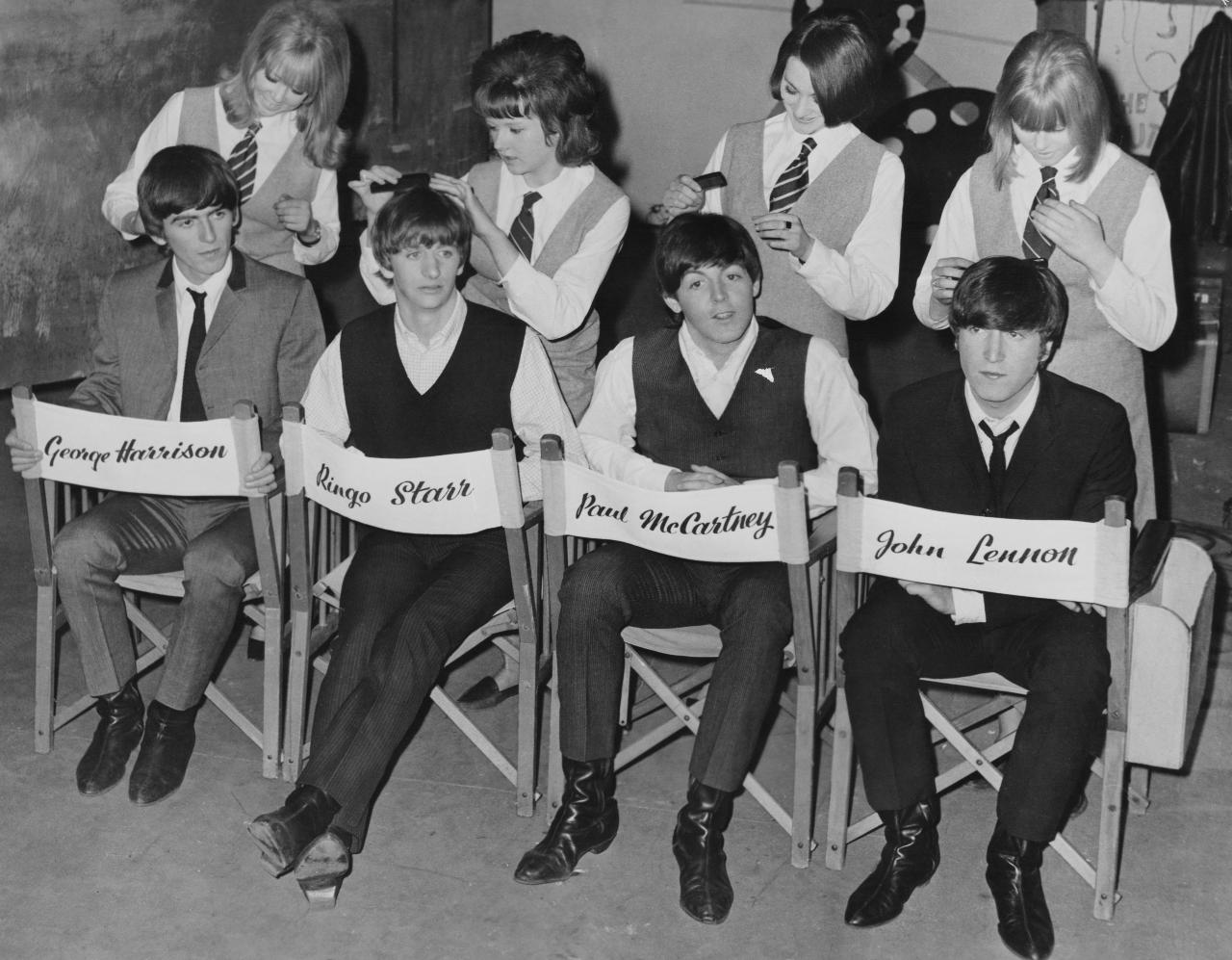
.webp)

